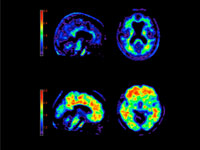AARPfrom: Los Angeles Times |
By Shari Roan
The audience wasn't happy. Its members, Jul. 30, 2010 (McClatchy-Tribune News Service delivered by Newstex) -- private citizens, healthcare professionals and advocates for the elderly _ had gathered to hear a report on how to prevent Alzheimer's; instead, they were told that, in fact, nothing has been proved to keep the disease at bay.
"We're not trying to take anyone's hope away," said report co-author Dr. Carl C. Bell, a professor of psychiatry and public health at the University of Illinois, Chicago, who noted the dejection in the air that day. "But we have to go with the hard science."
The bleak assessment was issued by a National Institutes of Health task force at an April meeting in Bethesda, Md. It was a State of the Science summary of more than 250 studies on potential ways to lower risk of the disease _ and it was entirely accurate: None of the data had been strong enough for experts to definitively say "Do this" or "Don't do that."
But that's not to say the prevention picture is without hope. Several healthy and inexpensive strategies are clearly worth trying, say neurologists and Alzheimer's researchers.
"There is an emerging body of evidence on what you can do to reduce your risk," said Debra Cherry, executive vice president of the California Southland Chapter of the Alzheimer's Association. "It's not at the levels of research from randomized, controlled trials, but it suggests things are moving in the right direction. We are learning how to reduce risk."
The strategies with the most support are regular physical activity, a Mediterranean diet and high levels of cognitive engagement.
There would appear to be little to lose. Among people 55 and older, 1 in 8 will develop Alzheimer's disease and 1 in 6 will develop some type of dementia.
Physical activity: Perhaps the best way to potentially cut the chance of developing Alzheimer's is to exercise _ regularly and with at least moderate intensity.
A large, long-term study presented earlier this month at the Alzheimer's Association International Conference on Alzheimer's Disease meeting in Honolulu found that people who perform moderate to heavy levels of exercise have a 40 percent lower risk of developing any type of dementia compared with people reporting the lowest level of exercise.
The study doesn't prove cause and effect, but it is noteworthy because of its size and the source of its data. The 1,200 participants, who had an average age of 76, were part of the long-running Framingham Study on cardiovascular health; their physical activity levels were recorded for at least a decade, along with the incidence of dementia.
Biological studies also support the idea that activity is good for the brain. In studies at the University of California Irvine, Dr. Carl Cotman has shown that exercise increases levels of a substance called brain-derived neurotrophic factor, which enhances brain function and promotes the survival of neurons.
"There is a lot of data from epidemiology studies and animal studies supporting physical activity," said Laurie Ryan, program director for Alzheimer's disease clinical trials at the National Institute on Aging. "Exercise really is promising."
But just any movement might not do. The data, she points out, suggest that moderate to heavier exercise is more beneficial than mild physical activity, such as stretching.
Diet: Numerous population-based studies suggest that people who eat a diet high in fruits, vegetables, nuts, red wine and omega-3 fatty acids _ and low in saturated fats _ have a reduced risk of dementia of any type.
"Dietary factors are important," Ryan said. "The Mediterranean diet seems more beneficial than the standard Western diet."
Omega-3 fatty acids, in particular, have been linked to a reduced risk of developing Alzheimer's. A 2005 Cochrane Review article stressed that research on omega-3s should be a priority. Because it can be hard to get enough of these nutrients from the diet _ they're found most plentifully in salmon and sardines _ some experts suggest taking a supplement of 1 or 2 grams a day.
Other dietary elements have also emerged as especially promising; among them are alcohol and tea.
Several studies have linked light to moderate alcohol intake with a reduced risk of dementia. One of the most solid pieces of research, published in the Lancet in 2002, followed more than 5,000 healthy people ages 55 and older for at least six years. That work, called the Rotterdam study, found that light-to-moderate drinkers had a 42 percent lower risk of dementia as compared with non-drinkers.
As for tea, a study presented at the recent International Conference on Alzheimer's Disease adds to the growing body of research suggesting its benefits. It found that, over time, tea drinkers have rates of cognitive decline 17 percent to 37 percent lower than non-tea drinkers.
The study's author, Lenore Arab, a professor of medicine at UCLA, examined data on 4,800 men and women 65 and older, recording their coffee and tea consumption and following them for up to 14 years. People who drank tea one to four times a week had the greatest reduced risk. Coffee intake was not linked to lower risk except among people who had the highest rate of consumption.
The reason why tea may have benefits is likely related to plant-based chemicals, not caffeine, Arab said.
Other nutritional gambits have proved spectacularly unimpressive. In particular, the once highly touted gingko biloba has not been found to reduce risk of dementia or Alzheimer's disease or, in fact, to improve cognitive performance in general. And there is little evidence that vitamin B, vitamin C, folate and beta-carotene are helpful in supplement form, as early studies had suggested.
"It could be that giving supplements is not the best way to do this," Ryan said. "It may be more important to get the nutrient in the diet."
The NIH's State of the Science panel appeared to take a dim view of supplements because of the potential for consumers to waste money.
"There is a cost to supplements," noted Dinesh Patel, a panel member and geriatrician at George Washington University School of Medicine. "For some of them, we don't even know the side effects or possible harms."
Cognitive engagement: Some studies suggest that living with someone is protective _ and there is strong evidence that the loss of a spouse leads to decline. Further, staying mentally engaged also seems to be beneficial.
One of the best-known studies on this second connection is the work by Dr. David Bennett, a professor of neurological sciences at Rush University Medical Center in Chicago. His research, called the Religious Orders Study, found that people who spent the most time engaged in mentally stimulating activities _ such as reading, playing cards or doing puzzles, going to the museum _ had a 47 percent reduced risk of developing dementia compared with those with the lowest rates of cognitive activity.
But studies that provide people with "brain games" and other tools to keep their minds busy and challenged have produced inconsistent findings. Such programs aim to improve memory training, reasoning and speed of thinking, and some studies show small effects over a five-year period. But no long-term data can attest to their effectiveness.
When to start: The timing of preventive strategies may prove crucial, with the notion of "the earlier, the better" seeming to hold true.
Research has suggested that highly educated people have a larger "cognitive reserve," and a study of more than 6,000 people published last year in the journal Neurology found that higher educational attainment appears to be linked to higher cognitive function. Once dementia sets in, however, level of education seems to have no bearing on how fast the dementia progresses.
Similarly, it may be wise to adopt a healthful diet and exercise regimen as soon as possible. "These lifestyle factors may have to occur early in life," Ryan said.
That doesn't mean that older people can't decrease their risk. Research strongly implies that diseases that develop later _ such as heart disease, diabetes, hypertension and obesity _ raise the possibility of dementia. Researchers are now exploring whether medications used to treat these conditions may also reduce Alzheimer's disease risk.
Some critics of the State of the Science report note that it may be difficult to ever prove whether some prevention strategies work; it would be unethical, for example, to assess the effect of hypertension on Alzheimer's by not treating some people.
Ultimately, the most reasonable approach would seem to boil down to this: Eat healthfully, exercise, maintain a pleasant social life and rigorously treat conditions like hypertension, high cholesterol, heart disease, obesity and diabetes.
"It will not hurt any of us to follow those suggestions," Cherry said. "To me, that's very optimistic."
___
AVAILABLE MEDICINES
Five medications have been approved to treat the cognitive symptoms of Alzheimer's disease. The drugs can reduce some symptoms _ such as difficulties with memory, language, attention and reasoning _ especially in the early stages of the disease. They can, accordingly, improve quality of life, but they don't work for everyone, and none of them works permanently. Eventually the disease will overtake the drugs' ability to compensate.
Four of the medications are cholinesterase inhibitors. These drugs appear to work by slowing the loss of acetylcholine in the brain, a chemical critical to cognitive function. The other, and newest drug, Namenda, is an N-methyl D-aspartate antagonist. It appears to work by regulating glutamate, a brain chemical that can cause cell death in excessive amounts.
A cholinesterase inhibitor and the NMDA antagonist are often prescribed together. In combination, or even taken alone, these medications can, in some people, improve the ability to perform simple tasks.
Namenda
Generic name: memantine
Approved: 2003
Used: In later stages
Razadyne or Reminyl
Generic name: galantamine
Approved: 2001
Used: Earlier stages
Exelon
Generic name: rivastigmine
Approved: 2000
Used: Earlier stages
Aricept
Generic name: donepezil
Approved: 1996
Use: Earlier stages
Cognex
Generic name: tacrine
Approved: 1993
Used: Rarely used due to serious side effects
___
WHERE TO TURN FOR SOME HELP
For basic information on Alzheimer's disease, including the latest research developments, go to the website of the National Institute on Aging.
For caregiving advice and guidance, contact the National Alliance for Caregiving.
For information and news on the disease, contact the national Alzheimer's Assn., which also showcases the latest in Alzheimer's research and science.
To participate in a new Alzheimer's Assn. program that matches people with the disease (and related dementias) to clinical trials for which they may be eligible, go the website or call (800) 272-3900. The service is free and confidential.
___
Newstex ID: KRTN-1429-47473338






